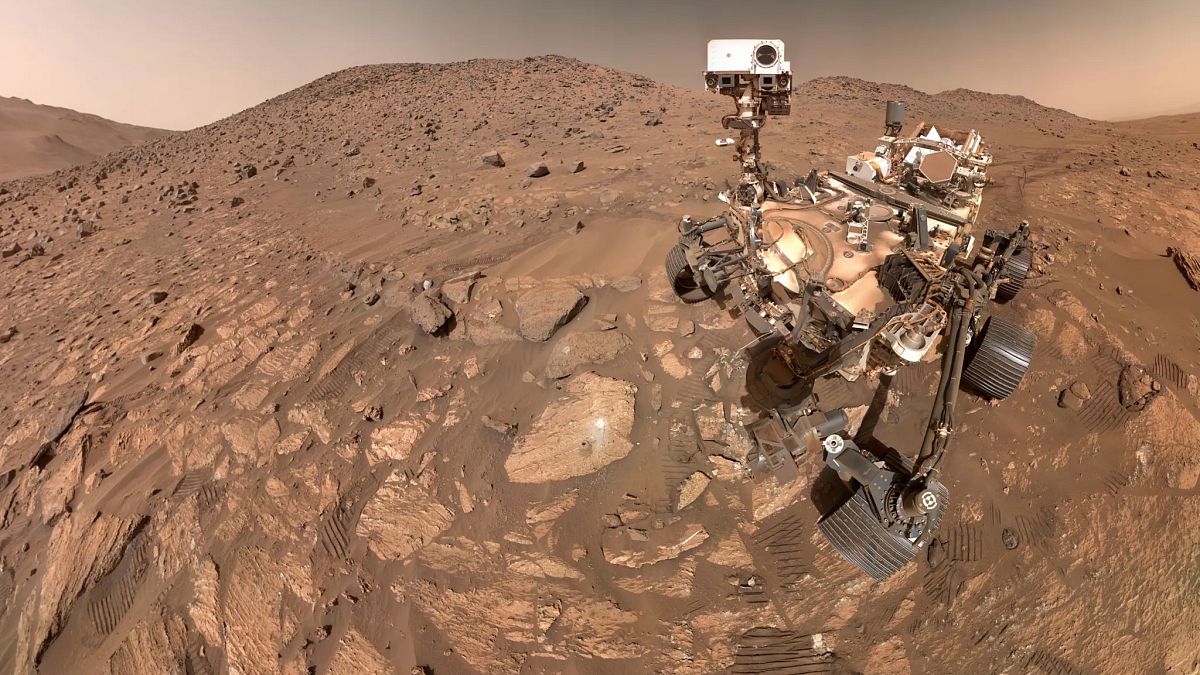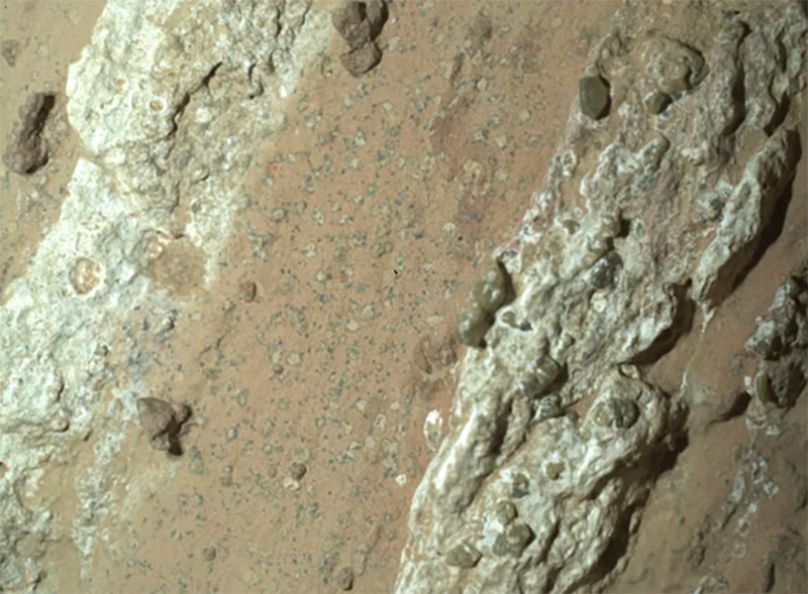To conduct a thorough analysis, the rock needs to be brought back to Earth, a process unlikely to occur before the 2030s.
NASA’s Perseverance rover has found new signs of possible support for microbial life on Mars in a rock.
Measured about one metre by 0.6 metres, the rock has been nicknamed “Cheyava Falls” after a Grand Canyon waterfall and “contains fascinating traits that may bear on the question of whether Mars was home to microscopic life in the distant past,” according to NASA.
Cheyava Falls was found in the mouth of the Jezero crater, which is believed to have been a lake 3.5 billion years ago.
“We have designed the route for Perseverance to ensure that it goes to areas with the potential for interesting scientific samples,” said Nicola Fox, the associate administrator of the Science Mission Directorate at NASA Headquarters in Washington.
Three signs of biological life
The whitish veins of calcium sulfate running the length of Cheyava Falls could mean that water once ran through the rock.
Between those veins are bands of reddish material in which the rover’s instrument SHERLOC (Scanning Habitable Environments with Raman & Luminescence for Organics & Chemicals) has detected organic compounds.
Perseverance zoomed into these red regions using its instrument PIXL (Planetary Instrument for X-ray Lithochemistry) and captured tiny leopard-like spots that contain iron and phosphate.
"It's absolutely crazy," said David Arge Klevang, an associate professor at Denmark’s Technology University (DTU) who helped develop the PIXL instrument. A statement from DTU said these three elements have not previously been found together on Mars.
"During the mission, we've gotten some pretty promising measurements, but nothing as eye-catching as this. It's the closest we've come to tangible evidence that there once was life on Mars," he added in a statement.
Scientists say such spots in rocks are often signs of life.
“This is the kind of key observation that SHERLOC was built for — to seek organic matter as it is an essential component of a search for past life,” SHERLOC’s principal investigator Kevin Hand, from NASA’s Jet Propulsion Laboratory in California, said in a statement.
Since the discovery of Cheyava Falls, the rover has looked at it from “every angle imaginable,” scientists say.
Yet the discovery of olivine crystals, which are formed in hot lava, may suggest a non-biological origin for the spots, according to DTU.
“Scientifically, Perseverance has nothing more to give. To fully understand what really happened in that Martian river valley at Jezero Crater billions of years ago, we’d want to bring the Cheyava Falls sample back to Earth, so it can be studied with the powerful instruments available in laboratories,” said Ken Farley, a Perseverance project scientist from the California Institute of Technology (Caltech).
According to DTU, this is unlikely to occur before the 2030s.
"If the stone confirms that there once was life on Mars, then we know that life is present on two planets in our solar system – then what about outside our solar system? That gives us a completely different understanding of ourselves,” Klevang said.
Mars 2020 mission
NASA’s Mars 2020 mission was designed to investigate whether the red planet was once habitable and to find signs of life on it.
Perseverance has multiple instruments, including 19 cameras. The two most important for identifying biosignatures are PIXL, an X-ray spectrometer that measures the compositions of the rocks on a microscopic scale and SHERLOC which can detect organic minerals.
The Perseverance mission has been collecting rocks that may have been created or changed long ago by the presence of water, which is necessary for life.
Rock samples are stored in tubes in the hopes of sending them back to Earth for analysis in a future mission.
















